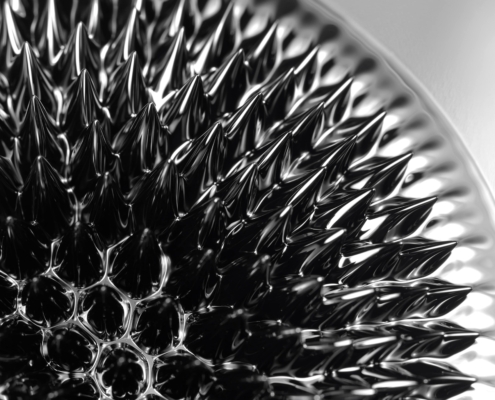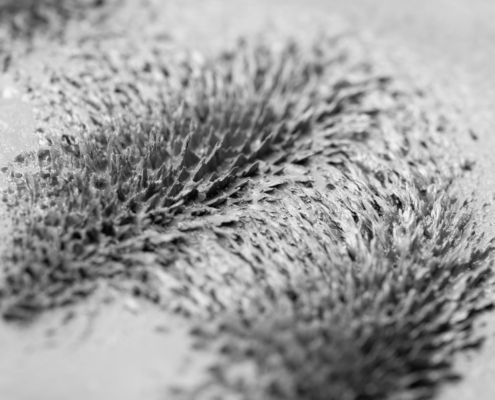Smart materials are a fascinating application of science that gained momentum in various industries. They have the ability to adapt to our needs, making them incredibly versatile, and offer a wide range of potential uses.
In this article, we will therefore give you an overview of what smart materials are, how they are used and some of them can even save lives.
So, what are smart materials?
Smart materials are materials that react to external stimuli and can change their properties. These stimuli can be of various forms, be it heat, pressure, light, or magnetic fields.
When exposed to these stimuli, smart materials change their shape, color, or stiffness. The change often occurs within seconds or even milliseconds. There are a variety of different smart materials, all with different properties and applications. So, let us give you a few examples:
Shape-memory alloy (SMA):
Shape-memory alloys (SMA) have the ability to “remember” their original shape. When SMA is deformed, it can return to its original shape by heating or cooling.
An example of a shape-memory alloy is nitinol, an alloy of nickel and titanium that, can be used in medical devices for implants and surgical tools such as endoscopes. Before being inserted into the body, nitinol implants can be formed into a compressed shape.
Once inside the body, they are heated to return to their original shape and thus fulfill their function as, for example, stents and artificial heart valves.
Besides our HAPTICORE MR actuators, our parent company STIWA Group, also manufactures shape-memory alloy products.
Ferrofluid:
Ferrofluid is a material consisting of tiny magnetic particles in a liquid. When exposed to a magnetic field, the particles can change their orientation and the material becomes stiffer.
Ferrofluid is often used in loudspeakers to provide precise control over the movement of the speaker’s diaphragm. In addition, ferrofluid can also be used for sealing.
Ferrofluid consists of iron particles on a nanometer scale and a carrier fluid | Image: MADDRAT
Magnetorheological (MR) fluids:
Like ferrofluids, MR fluids or materials consist of tiny magnetizable particles. In contrast to ferrofluids, MR materials, however, contain larger particles. While ferrofluid particles are on a nanometer scale, MR fluid and MR powder contain iron particles on a micrometer scale, which in turn gives them different properties e.g. regarding friction.
MR fluids are often used in adaptive damping systems. However, their special properties also make them suitable as brakes. On a small scale, we use MR materials to generate programmable haptic feedback with our HAPTICORE rotary haptic actuators. Learn more about how our HAPTICORE technology works.
MR Fluid and other magnetorheological materials consist of iron particles on a micrometer scale.
Electroactive Polymer (EAP):
Another type of transformable smart material is electroactive polymer, which can change its shape, size, or volume under the influence of an electrical field.
What makes EAPs particularly interesting and distinguishes them from other actuators, such as piezoelectric ceramics, is their extreme ductility and free formability combined with a high load capacity. Their fast response time also makes them excellent for use as actuators.
This unique property has made them ideal for various applications, such as artificial muscles, soft robotics, and energy harvesting devices. Compared to traditional actuators, EAPs offer several advantages such as low weight, low power consumption, and compatibility with different fabrication methods. Different types of EAPs exist, including ionic EAPs, electronic EAPs, and liquid crystal elastomers. Current research aims at improving the performance of EAPs and exploring new applications that can benefit from their unique characteristics.
Piezoelectric materials:
Piezoelectric materials are smart materials that have been garnering attention for their ability to convert mechanical energy into electrical energy and vice versa. This unique property has made them an essential component in a wide range of applications, including sensors, actuators, transducers, and energy harvesting devices.
Piezoelectric materials exhibit a phenomenon known as the direct piezoelectric effect, where applied mechanical stress induces an electrical charge separation across the material, resulting in an electric potential. Conversely, they also exhibit the converse piezoelectric effect, where an applied electric field generates a mechanical deformation, leading to a strain in the material.
Piezoelectric materials can be classified into two types – natural and synthetic. Natural piezoelectric materials include quartz, Rochelle salt, tourmaline, and topaz, while synthetic materials include lead zirconate titanate (PZT), barium titanate, and polyvinylidene fluoride (PVDF). PZT is one of the most commonly used piezoelectric materials due to its high piezoelectric coefficients, which result in high sensitivity and large output signals. PZT-based devices are used in various applications, including medical ultrasound imaging, sonar systems, vibration sensors, and actuators.
Piezoelectric materials are also used for haptic feedback to generate vibrations that mimic the sensation of touch. These materials can be integrated into various devices, such as smartphones, game controllers, and wearable technology, to provide tactile feedback to the user.
A quartz crystal, one of the natural piezoelectric materials. | Image: PeterHermesFurian
Interested in learning even more about piezoelectric materials and how they make an electric lighter work? Then check out Steve Mould’s video.
Chromogenic materials:
Inspired by nature, chromogenic materials exhibit reversible changes in color or optical properties in response to external stimuli such as electric fields, heat, light, gas, magnetic fields, or mechanical stress.
Probably the best-known application: sunglasses. These sunglasses are equipped with photochromic lenses. The molecules within these lenses or their coating react to UV light. The light causes a temporary change in the structure of the molecules, which leads to a darkening of the lenses.
However, there are various use cases, reaching from smart widows to temperature-sensitive paints and security inks.
Conclusion
The world of smart materials is a fascinating and exciting one, showing us that materials are more than just rocks, metals, and plastics. From self-healing materials that automatically repair themselves when damaged to smart textiles that can warm or cool us when needed, smart materials promise countless product innovations.
Advances in materials science and technology will continue to produce amazing developments, empowering us to find even smarter, more adaptable, and more sustainable solutions. We are excited about future developments in this area and look forward to seeing how smart materials will change our lives.
As a joint venture, we build on years of experience of our parent company STIWA, taking care of the fully automated production of our high-quality products. In addition to our MR technologies, STIWA also fabricates other products, for example, based on SMA, and is your partner for the fully automated industrial production of products made of smart materials. Learn more about the manufacturing capabilities of the STIWA Group.
You may also like…
Try out HAPTICORE
Get your Xperience Kit today
You want to experience HAPTICORE for yourself?
Order your HAPTICORE Xperience Kit today, test our adaptive haptic feedback, and become part of the #hapticrevolution.
Schedule a Free HAPTICORE Demo
Experience programmable haptic feedback
Learn how our technology works
Discover optimization potential for your HMI
Find the right HAPTICORE product for your application
You don’t want to wait? Check out our instant video tour and learn more about HAPTICORE.









Who invented the rotary knob
/in Blog, Haptics Wiki/by Louis HoffmannHaptics in HMIs
/in Blog, Haptics Wiki/by Louis HoffmannLearn more about how integrating haptics into your next HMI makes operating your devices simple, safe, and intuitive.
Describing haptic feedback
/in Blog, Haptics Wiki/by Louis HoffmannLet’s talk about what you feel – well not on an emotional level… Let’s talk about why it is so hard to describe haptic feedback.